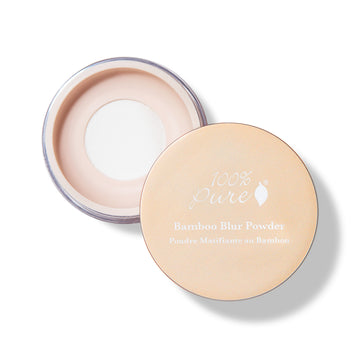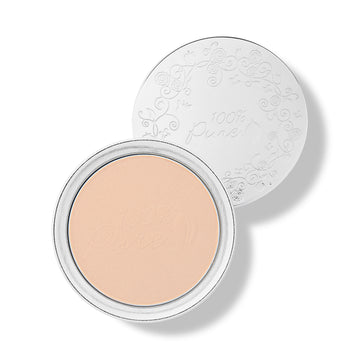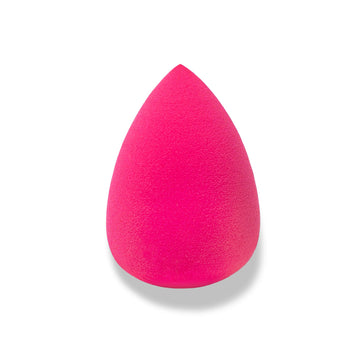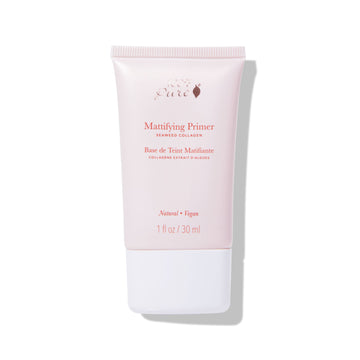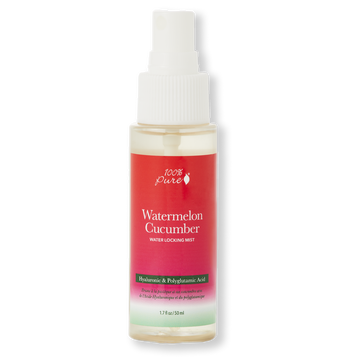Say Goodbye to Makeup Mishaps by Understanding the Right Powder for Every Look
Posted on March 31, 2025 Written by: 100% PURE®
If you've ever wondered about the difference between setting powder and finishing powder, you're not alone. Many makeup lovers use these terms interchangeably, but they actually serve distinct purposes in a flawless makeup routine. Understanding setting vs. finishing powder is key to achieving the long-lasting, photo-ready look you want.
Without the right powders, even the most carefully applied makeup can fade, crease, or become oily throughout the day. That’s why choosing the right product is essential. But with so much conflicting information out there, it's easy to get confused. Is setting powder necessary? What is finishing powder used for? And most importantly—do you need both?
In this guide, we’ll clear up the misconceptions about setting powder vs. finishing powder, so you can confidently choose the best product for your makeup routine. Whether you’re looking for all-day wear or a smooth, airbrushed finish, knowing the difference will help you master your look like a pro.
What Does Setting Powder Do?
Setting powder is the secret to keeping your makeup in place all day long. It works by absorbing excess oils and locking liquid and cream products—like foundation and concealer—into place. This prevents creasing, smudging, and fading, giving you a fresh, flawless look for hours.
One of the biggest benefits of setting powder vs. finishing powder is its ability to control shine. If you struggle with oily skin or find that your makeup moves throughout the day, a good makeup finishing powder can help. But for true longevity, setting powder is the real MVP. Applied after your foundation and concealer, it ensures your base stays intact, even in heat and humidity.
A great example of a high-performance setting powder is our Bamboo Blur Powder. This ultra-lightweight, talc-free formula blurs imperfections while setting your makeup for a long-lasting, soft-focus finish. Its natural ingredients make it a great choice for those looking for a clean beauty option without compromising performance.
So, is setting powder necessary? If you want a flawless, all-day wear makeup look, the answer is a resounding yes!

What Does Finishing Powder Do?
While setting powder locks in your makeup, finishing powder is all about the final touch. This product is designed to refine and perfect your look, giving your skin a smooth, airbrushed finish. If you’ve ever noticed texture, fine lines, or visible pores after applying foundation, a finishing powder can help blur those imperfections and create a seamless effect.
Unlike setting powder, which focuses on longevity, finishing powder is more about aesthetics. It softens harsh lines and adds a lightweight veil of perfection, making it a go-to for special occasions, photography, or whenever you want an extra-polished look.
For those looking for a setting vs. finishing powder hybrid, our Fruit Pigmented® Powder Foundation is a great option. This unique formula offers both coverage and a soft-focus finish, making it ideal for setting makeup while also providing that refined, perfected look. Plus, its fruit pigments deliver natural color and skincare benefits.
So, when considering setting powder vs. finishing powder, think of setting powder as your makeup’s foundation and finishing powder as the final filter—both serve unique but complementary roles in achieving a flawless complexion.
Setting Powder vs. Finishing Powder: Which One Do You Need?
Now that you understand what setting powder and finishing powder do, how do you decide which one is right for you? The answer depends on your makeup goals and the look you're trying to achieve.
- For everyday wear: If you want your makeup to last all day without creasing or getting oily, setting powder is a must. It locks in foundation and concealer, ensuring a fresh look from morning to night.
- For a flawless, airbrushed effect: If you’re looking to smooth texture, blur pores, and soften fine lines, finishing powder is your go-to. It’s perfect for giving your skin that extra-polished touch.
- For photography and special occasions: Using both powders together can create the ultimate long-lasting, picture-perfect finish. Apply setting powder first to secure your base, then lightly dust finishing powder on top for a refined, camera-ready look.
So, is setting powder necessary? If you want your makeup to stay in place, absolutely. But if you’re after that extra-smooth finish, incorporating a makeup finishing powder into your routine can elevate your look to the next level.
Setting Powder vs. Finishing Powder for Different Skin Types
Your skin type plays a big role in deciding whether to use setting powder vs. finishing powder—or a combination of both. Here’s how to choose the right product for your skin’s needs:
Oily Skin: Control Shine with Mattifying Setting Powder
If you have oily skin, a good setting powder is essential to keeping your makeup in place. A lightweight, oil-absorbing formula like the 100% PURE Bamboo Blur Powder helps control excess shine, prevents creasing, and keeps your foundation from slipping throughout the day. Apply it to your T-zone and other oily areas for a long-lasting matte finish.
Dry Skin: Hydrating Finishing Powder for a Luminous Look
For dry skin, a traditional setting powder can sometimes feel too drying. Instead, opt for a hydrating finishing powder that adds a soft, radiant glow. The 100% PURE Fruit Pigmented® Powder Foundation works as a makeup finishing powder while also providing lightweight coverage and nourishment, preventing your skin from looking cakey or dull.
Combination Skin: The Best of Both Worlds
If you have combination skin, you can use both setting and finishing powders strategically. Apply a mattifying setting powder, like 100% PURE Bamboo Blur Powder, to oil-prone areas like the T-zone. Then, dust a luminous finishing powder, such as the Fruit Pigmented® Powder Foundation, over the rest of your face to maintain a natural glow.
Knowing when to use setting powder vs. finishing powder based on your skin type ensures your makeup looks flawless and lasts all day—no matter your skin’s needs!
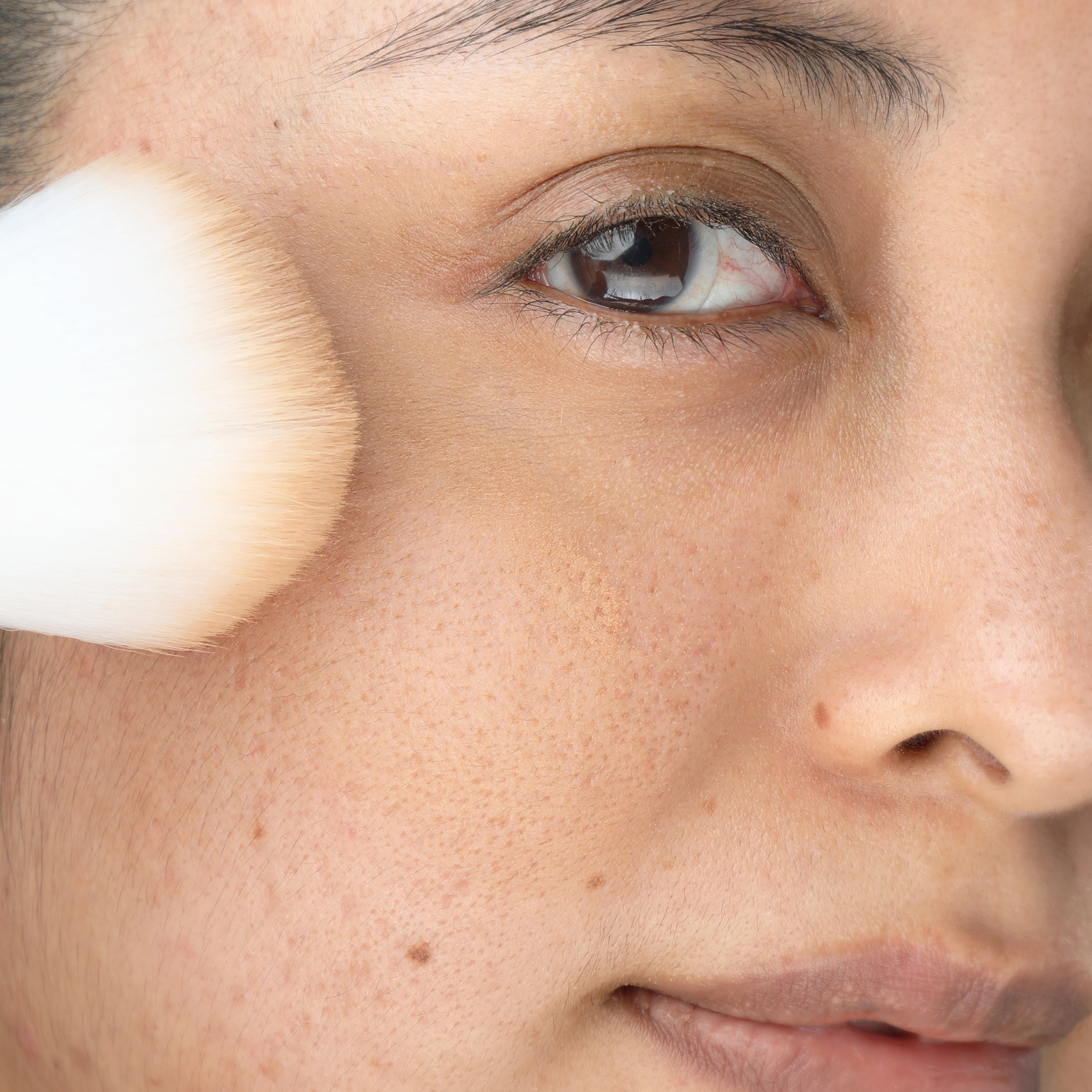
Best Application Techniques for a Flawless Finish
How you apply setting powder vs. finishing powder can make all the difference in achieving a flawless look. From full-face longevity to a soft-focus glow, using the right technique and tools ensures the best results.
Baking Method vs. Light Dusting: When to Use Each
- Baking Method: Best for oily skin or long wear, baking involves applying a thick layer of setting powder over concealer or foundation and letting it sit for 5–10 minutes before dusting off the excess. This locks in makeup for all-day wear and prevents creasing. Use a damp beauty sponge, like our Non Latex Makeup Blender, to press the powder into the skin.
- Light Dusting: Ideal for dry or combination skin, this technique sets makeup without looking heavy. Lightly swirl a kabuki brush over setting or finishing powder, tapping off excess before applying. This creates a natural, breathable finish without emphasizing dryness.
Essential Tools for Powder Application
- Powder Puffs: Great for pressing powder into the skin for extra longevity.
- Kabuki Brushes: Perfect for a soft, diffused application of makeup finishing powder.
- Beauty Sponges: A must-have for the baking method, ensuring a crease-free, locked-in finish.
The Perfect Routine for Long-Lasting Makeup
- Start with a Primer: A smooth base helps powder adhere evenly. The 100% PURE Mattifying Primer preps the skin, controls oil, and enhances powder application.
- Apply Setting Powder: Use the baking method for long-lasting wear or a light dusting for a natural finish.
- Use Finishing Powder for a Blurred Look: Apply lightly over your face to refine texture and add a soft-focus glow.
- Lock It In with a Mist: Finish with the 100% PURE Watermelon Cucumber Water Locking Mist to set your makeup and keep your skin hydrated.
Mastering the right application technique for setting vs. finishing powder ensures your makeup stays flawless all day, no matter the occasion!
FAQ Section
What’s the difference between setting powder and finishing powder?
Setting powder is used to lock in foundation and concealer, preventing creasing and extending makeup wear. Finishing powder, on the other hand, is designed to refine and blur imperfections, giving your skin a smooth, airbrushed look. When comparing setting powder vs. finishing powder, think of setting powder as the essential step for longevity and finishing powder as the final touch for a flawless finish.
Do I need to use both powders?
Not necessarily! If your main concern is long-lasting makeup, a setting powder will do the job. If you want to blur fine lines and create a soft-focus effect, a makeup finishing powder is a great addition. For special occasions or photography, using both can give you the best of both worlds.
Can setting powder make makeup last longer?
Yes! Setting powder absorbs excess oil, locks in liquid products, and prevents smudging or creasing throughout the day. This is especially beneficial for oily skin or humid climates.
Is finishing powder necessary for everyday makeup?
Not always. Finishing powder is great for refining your makeup and giving your skin a perfected look, but if you prefer a natural finish, you may not need it daily. However, for special occasions or high-definition settings, a finishing powder can elevate your makeup.
How do I prevent cakiness when applying powder?
To avoid a heavy, cakey look:
- Apply a light dusting instead of layering too much product.
- Use a damp beauty sponge like the 100% PURE Non Latex Makeup Blender to press powder into the skin for a seamless blend.
- Start with a hydrating primer like the 100% PURE Mattifying Primer to create a smooth base.
- Finish with a setting mist like the 100% PURE Watermelon Cucumber Water Locking Mist to melt powders into the skin and keep makeup fresh.
With the right products and techniques, setting vs. finishing powder can enhance your makeup without looking heavy or dry!
Conclusion & Call-to-Action
Understanding the difference between setting powder vs. finishing powder can transform your makeup routine. Setting powder locks in your foundation and concealer for long-lasting wear, while finishing powder smooths and blurs for a flawless, airbrushed effect. Whether you need shine control, hydration, or a perfect combination of both, choosing the right powder for your skin type and mastering the best application techniques will help you achieve a seamless finish every time.
Ready to upgrade your makeup routine with clean beauty essentials? Shop the best setting and finishing powders at 100% PURE now!
- Tags: March-2025
We carefully hand-select products based on strict purity standards, and only recommend products we feel meet this criteria. 100% PURE™ may earn a small commission for products purchased through affiliate links.
The information in this article is for educational use, and not intended to substitute professional medical advice, diagnosis, or treatment and should not be used as such.












